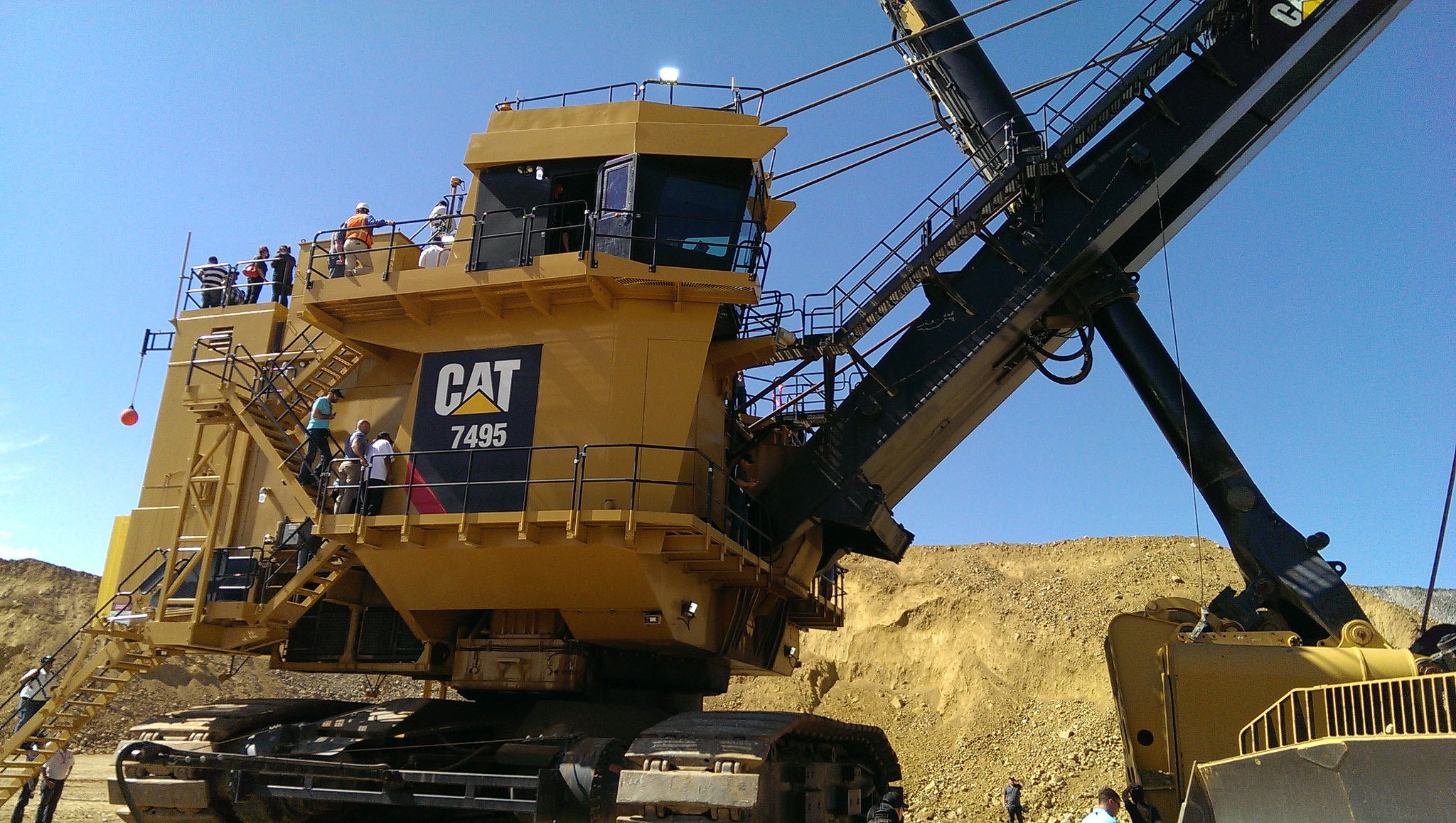By H. Will Racke
Last year was a rough one for Caterpillar Inc. Unfortunately for the heavy machinery giant, a cyclical downturn in the global industries it supplies could make 2016 as bad or worse.
The Peoria, Ill.-based firm is the world’s largest manufacturer of construction, mining and energy extraction equipment. Its dominant position in overseas and emerging markets, normally a source of significant sales growth, has become a liability amid weakness in the core sectors it serves.
Low commodity prices, an economic slowdown in China, and a battered overseas mining sector continue to deflate Caterpillar’s sales volume and extend its protracted slump, which in November reached 36 consecutive months of declining sales.
Based on internal projections, company officials believe that things will get worse before they get better. In October, Caterpillar predicted for the coming year a 10 percent sales drop in its Energy and Transportation and Resource Industries segments, the two divisions most susceptible to worldwide economic trends.
“The environment remains extremely challenging for most of the key industries we serve, with sales and revenues down 19 percent from the third quarter last year,” said Chairman and CEO Doug Oberhelman in an October press release that accompanied the third quarter earnings report. “Improving how we operate is our focus amidst the continued weakness in mining and oil and gas.”
Some industry analysts see risk in Caterpillar’s exposure to mining markets, particularly coal. As coal’s cost competitiveness against natural gas and oil diminishes, demand for that energy source may fall as well. Conditions in the global oil market are no help, either. With crude oil currently priced at just over $30 a barrel, demand has cratered for Caterpillar’s oil rig engines and generators.
“The biggest thing for them is the unpredictability of the markets,” said Morningstar analyst Kwame Webb. “As recently as 18 months ago, more than 50 percent of their business came from energy and transportation, driven by oil and gas demand.”
Webb also pointed to reduced construction demand in Asia, which is no longer the booming market for Caterpillar that it was. “Every time you see GDP in China revised down, that’s a problem for them,” he said.
The most recent Bloomberg survey of industry analysts forecast a 12-month target stock price of $65.81, slightly up from the current price but well below the 52-week high of $89.62. Three quarters of those surveyed recommended that investors hold their Caterpillar stock.
In the first half of 2015, Caterpillar stock was supported by healthy prices for commodities such as crude oil, natural gas and copper. Just six months later, falling prices have hit the company hard. Figure into the mix reduced Chinese construction demand and a dismal Brazilian economy, and Caterpillar appears to be in the midst of its worst rough patch in five years.
If those global headwinds persist throughout the coming year, Caterpillar will be hard pressed to match even 2015’s performance, when its stock closed the year at $69, down almost 20 percent from its yearly high.
Caterpillar will release its annual earnings at the end of the month, and it expects to reach about 48 billion in sales for the year, down from $55.18 billion in 2014.
In the first three quarters of 2015, ended Sept. 30, 2015, revenues sank to $35.98 billion from $40.94 billion during the same time period the year before.
That has translated to a 25 percent fall in year-to-date profits—$2.19 billion versus $2.94 billion over three quarters a year ago.
The precipitous drop in income has taken a toll on Caterpillar’s domestic workforce. This year, over 1,000 full-time employees were laid off in Illinois alone, with cuts coming from its Decatur, Ill. plant and Peoria headquarters. A likely fourth year of contracting sales will force the company to further lower its cost structure, which in practice means more layoffs.
A restructuring plan introduced in September calls for the permanent reduction of between 4,000 and 5,000 salaried and management employees by the end of 2016. The company also plans to consolidate or close altogether as many as 20 production facilities.
Will those measures work to keep Caterpillar’s bottom line in the black? Webb thinks they should help, but he did not see any near- or mid-term remedy that would help the firm get back to its 2012 level, when it took in profits to the tune of $5.47 billion.
“At best, they’re looking at reaching 50 to 60 percent of their 2012 profitability within the next five years,’’ he said.
Caterpillar has tried to cast recent trends in a positive light by emphasizing its history of driving through boom and bust cycles. In its preliminary 2016 outlook, the firm pointed to its status as the world’s leading supplier to fundamental growth sectors like construction and mining, asserting that it will be well-positioned to capitalize on future growth when the global economic picture improves.
“Managing through cyclicality has been critical to Caterpillar’s success for the past 90 years,” said Oberhelman. “It’s nothing new for us or our customers.”


